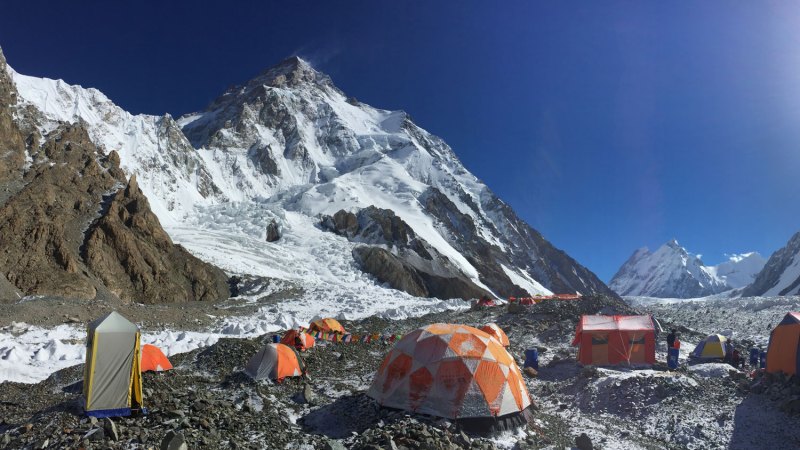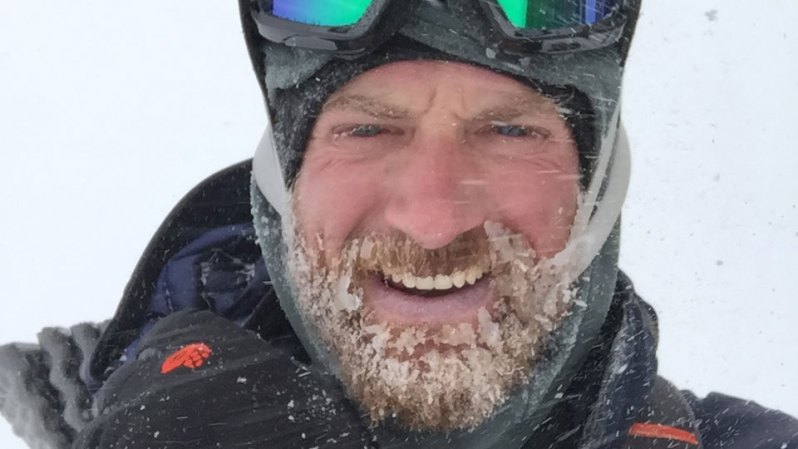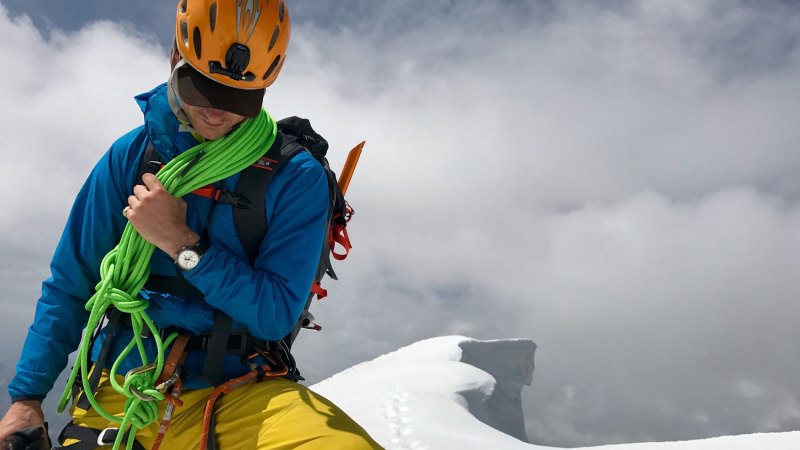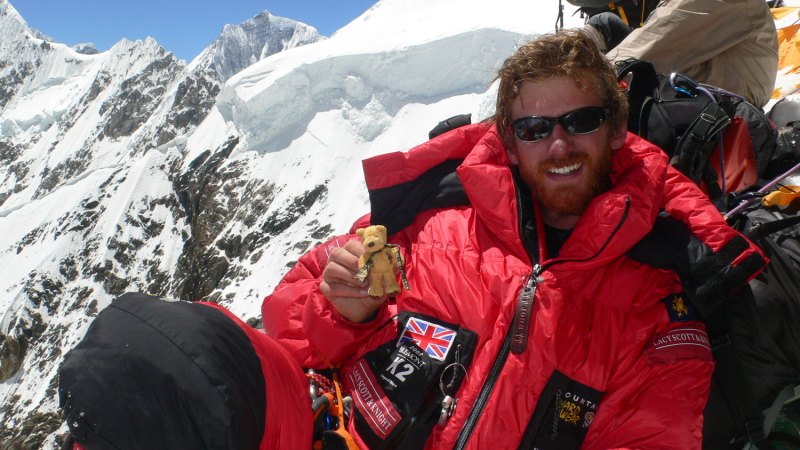What makes a man extraordinary? Is there an element that sets one man apart from the other – something inherent or learned? As mountain climber Jake Meyer prepares for his most challenging and dangerous expedition yet, we asked him to share with us the secret ingredients that yield a “high achiever.” His answers surprised us.
In his professional career, Jake is an accomplished climber who has completed a number of incredible feats over the years. His current resume includes mountain peaks that many of us will never even see, let alone summit. Ascending from the Tibetan side of the mountain, Jake Meyer summited Mount Everest on June 4, 2005 as the youngest Briton to do so. In this feat, at the tender age of 21, he also earned the title of youngest Briton to complete the Seven Summits challenge. He is now preparing to attempt K2, a mountain that holds the reputation of the most challenging summit in the world.

In interviewing Jake, one might expect to find a hard-core athlete that follows a rigorously structured life. You know the type — super confident, wakes up at 5 a.m. to run 15 miles, eats only spinach. Instead, we found a guy that describes himself very much like we might ourselves: laid-back, lazy, and loves pizza. Because Jake is just a regular guy who decided to put the work into his passion, we feel that his story and advice hold great value and can be applied in our own lives.
You started climbing at the young age of 12 and were world renowned by 21 for multiple climbing feats. What inspired you to start climbing?
Essentially, I started climbing because when I was at school, I was completely useless at traditional sports. I enjoyed playing them, but I’m pretty malcoordinated when it comes to trying to kick, catch or throw a ball! When I was 12, one of the teachers at my primary school organized for 3 of us boys to go climbing down in Dorset on the south coast of England. I signed up on a whim, not really knowing what climbing was going to be like, but just fell in love with it. It quickly progressed from a hobby, to a passion, and then to a way of life.

Not the best at school sports … weird, sounds familiar. Tell us about your life now. What does your daily routine look like? In what ways do you practice discipline?
I’d imagine that most people would expect so-called “high achievers” to be incredibly disciplined and focused on their routine. I’m sorry to burst that bubble, but to be honest, not only do I find it very difficult to create a routine, but I’m actually inherently pretty lazy in many aspects of my everyday life.
What is your favorite meal on the mountain?
In basecamp, I’m always a fan of pizza! Of course not Dominoes ordered in — although we tend to crave familiar treats like that — but one baked in a pan on a kerosene stove. Normally with cheese and tinned tuna on top. Higher on the mountain, you start to lose your sense of taste, so having very flavorsome food is important. The quality of boil-in-the-bag or dehydrated meals has improved hugely over the years. My personal favorite company is Expedition Foods, who make some delicious chilli-con-carne, fish pie, and chicken curry meals. In terms of snacks, you can’t beat some good biltong or beef jerky, as you often crave savory food over sweet ones.
You’ve got an upcoming date with your “mountain mistress,” which will be your third attempt to summit K2. Tell us about your relationship with the mountain and what it means to you to make it to the top.
I’ve had a 10-year “affair” with this mountain. I call it an affair, as this was the way that [George Mallory] described his relationship with Everest in the 1920s. Every ounce of reason would tell you to stay at home safe and sound with your family, but I find myself thinking constantly of K2. She haunts my dreams and lingers as a specter in the background of my day to day life.

K2 represents one of the most difficult and dangerous mountaineering challenges in the world. Whilst Everest may be slightly higher and there are other mountains that are steeper, more remote, or have higher death tolls, when you look at all the variables together, K2 emerges as this almost mythical personality. On my last trip — I’ve attempted it in 2009 and 2016 — my climbing partner Di Gilbert countered this potential self-limiting reputation beautifully by maintaining the mindset of “It’s still just a mountain.”
All of the routes up the mountain are incredibly steep and sustained, and the camp sites are small and exposed. In 2016, the entire Camp 3 (at 7300 m) was destroyed by an avalanche, which ended our summit attempt. Fortunately, no one was there at the time — we were in the camp below — as we would have all certainly been killed. To date, K2 has only had around 364 ascents and 82 deaths (23 percent), against Everest’s 8,306 summits and 288 deaths (3.5 percent).
What are some key pieces of gear that travel with you during your expeditions? Are they as unyielding as you?
My Bremont MBII watch goes everywhere with me. I love the simplicity and robustness of a mechanical watch and also find something soothing about the mechanical ticking and whirring that you can hear at night when you hold it up close to your head.
I’m slightly ashamed to say my iPhone has taken on a greater importance over the last few trips. The cameras are getting so good — considering the size/weight/accessibility — that I don’t really bother with a proper camera anymore. As added perks, I can listen to music or audio books when I’m trekking or in basecamp; can link via Bluetooth to my satellite communications equipment to send blogs, texts, and photos home; and can provide live tracking on maps.

Despite the technology, I still do love proper paper books when I go on expeditions. Normally, if each person takes a couple of
We talked with Ben Saunders recently before his bold 2017 attempt to undertake the first-ever solo, unsupported expedition across Antarctica. He told us that you’ve traveled with his small teddy bear, Barnaby Bear. How was Barnaby as a traveling companion?
Barnaby was everything you’d want in a climbing partner: dedicated, stoic, comforting, supportive, and uncomplaining despite the hardships. That said, he did tend to make me do the majority of the hard work. He rarely helped set up the tent or offered to help cook, but he also didn’t snore … so on balance, I’d share a tent with him any day! He is becoming one of the foremost and well-traveled adventure bears. I’m sure that he’ll be writing his memoirs soon!
In all of your experiences up to date, in what some would call an extraordinary life, is there something you’ve learned about yourself or the world around you that you think is worth sharing with our readers?
Success in life is not about climbing Mount Everest. Instead, it’s about finding the things that you’re passionate about — the things that bring you joy — and committing yourself to those. In the pursuit of those things, whatever they may be, there will be opportunities to learn new things about yourself and to stretch your own horizons. It is in these efforts that we’re able to appreciate what we’re truly capable of. In response, people cannot help but be inspired by those who drive towards their passions with tenacity, determination, and a sense of adventure. Be that interesting person and inspire others with your dreams and experiences!
Jake’s approach to life comes across as a simple one: find your passion and commit to it. Although life isn’t always that simple, a clear mantra like this could benefit us all when we get caught up in the details. Sometimes easy to forget — or easy to ignore — finding passion is essential to our well being and feeds our inspiration, sense of purpose, and happiness. As per Jake’s example, when things do get tough occasionally, at least we have pizza and lazy days to help us push through. To get started, though, perhaps the best way to climb a mountain is to take a step in the right direction.


